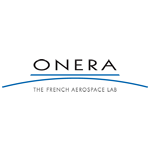Visit to Politecnico di Milano laboratories (9:00 -12:30)
Wind tunnel
Boundary layer section (14 x 4 m): simulates the earth's boundary layer, reproducing large sections of orography, and is therefore especially suited to wind engineering applications, on large-scale models of civil structures. Low turbulence section (4 x 4 m): for carrying out tests with high Reynolds numbers and low turbulence in confined flow and free flow configurations (helicopter tests on rotary wing models). Thanks to its large size, the testing section lends itself to a wide range of applications in the fields of aeronautics, vehicles and sport using life-size models.
Space Lab
The lab collects different activities related to the space technology research and development, such as those related to the calibration, implementation and on ground functional verification of the tethered-net capture system for Active Debris Removal for the microgravity flights, the lunar simulant 3D printing process and product characterization, the trapped in regolith icy volatiles sublimation, the nanosats mission development.
LFM Lab – Fluid-dynamics of turbomachinery
LFM is equipped with two closed-loop test rigs for full scale turbines and compressors, two transonic wind tunnels for cascade testing, a test-rig for supersonic flows of organic vapors in dense-gas conditions, a test rig for hydraulic machines, two test sections for industrial characterization of safety valves, calibration devices for aerodynamic instrumentation.
SPLab – Space propulsion laboratory
The scientific activity of the Lab has mostly been devoted to fundamental combustion problems of innovative high-energy condensed materials, steady burning rates, radiant ignition, static and dynamic extinction, non-steady burning, radiation assisted burning, deflagration limits, frequency response function, transient flame modelling. In more recent years interest has moved to nano-energetics for propulsion, performance of metallized formulations, aggregation and agglomeration phenomena, dual metal formulations, solid and hybrid rocket motors, space launchers, in-space propulsion.
La.S.T. – Transport safety lab
The La.S.T. lab is divided in two main branches, passive and active safety. Research on passive safety began in the Department of Aerospace Science and Technology in the late ‘60s leading to the constitution of the first academic crash laboratory in Italy. Mission of the lab is to improve transportation safety through numerical simulations and experimental activities.
Space Lab – Robotic facility
The robotic facility is a Hardware-in-the-Loop test facility, with the purpose to support the development of GNC technologies for space applications and their verification and validation up to TRL 4/5. Particular attention is given to the verification and validation of image processing techniques. The lab is equipped with a calibrated Moon diorama 2 x 2.4 m wide, a 7 dof robotic arm, a set of led array to control illumination and two high resolution NavCams. Current activities relate with planetary and small bodies landing, uncooperative objects shape, pose and inertia reconstruction.
Visit to SELEX-GALILEO laboratories 25€
Leonardo S.p.A., Viale Europa – 20014 Nerviano
SELEX Galileo Inc., a US subsidiary of Leonardo, provides technological excellence to Government Agencies, the DoD and industry partners. As a leader in defense electronics, SELEX Galileo Inc. leverages a distinctive strength in airborne mission-critical systems for situational awareness, self-protection, and surveillance, delivering a wide range of capabilities and services to customers that enhance mission success. Through a combination of state-of-the-art technology, integration and modification capability, training, and logistics support, SELEX Galileo Inc supplies an inclusive service loop that addresses our customers’ stated requirements.
Schedule
9:30 Start of the trip from Politecnico di Milano (building BL27)
10.30 Arrival and welcome – room 70, 2° floor building B
10.45 Introduction to Leonardo Company
Presentation of the site
11.05 Space-related activities
11.25 Radar-related activities
11.45 Visit of laboratories
- Integration MASER Galileo PHM
- Solar panels integration
- Electronic boards integration area
- Gabbiano area
13.10 Return to the meeting room – Conclusions
13.15 Buffet lunch
14.30 Farewell of the guests
14:45 Return trip from Selex-Galileo site
15:15 Arrival to Politecnico di Milano site
If you are interested in one of these visits please go to the welcome desk and register on a list. Number of places are limited













